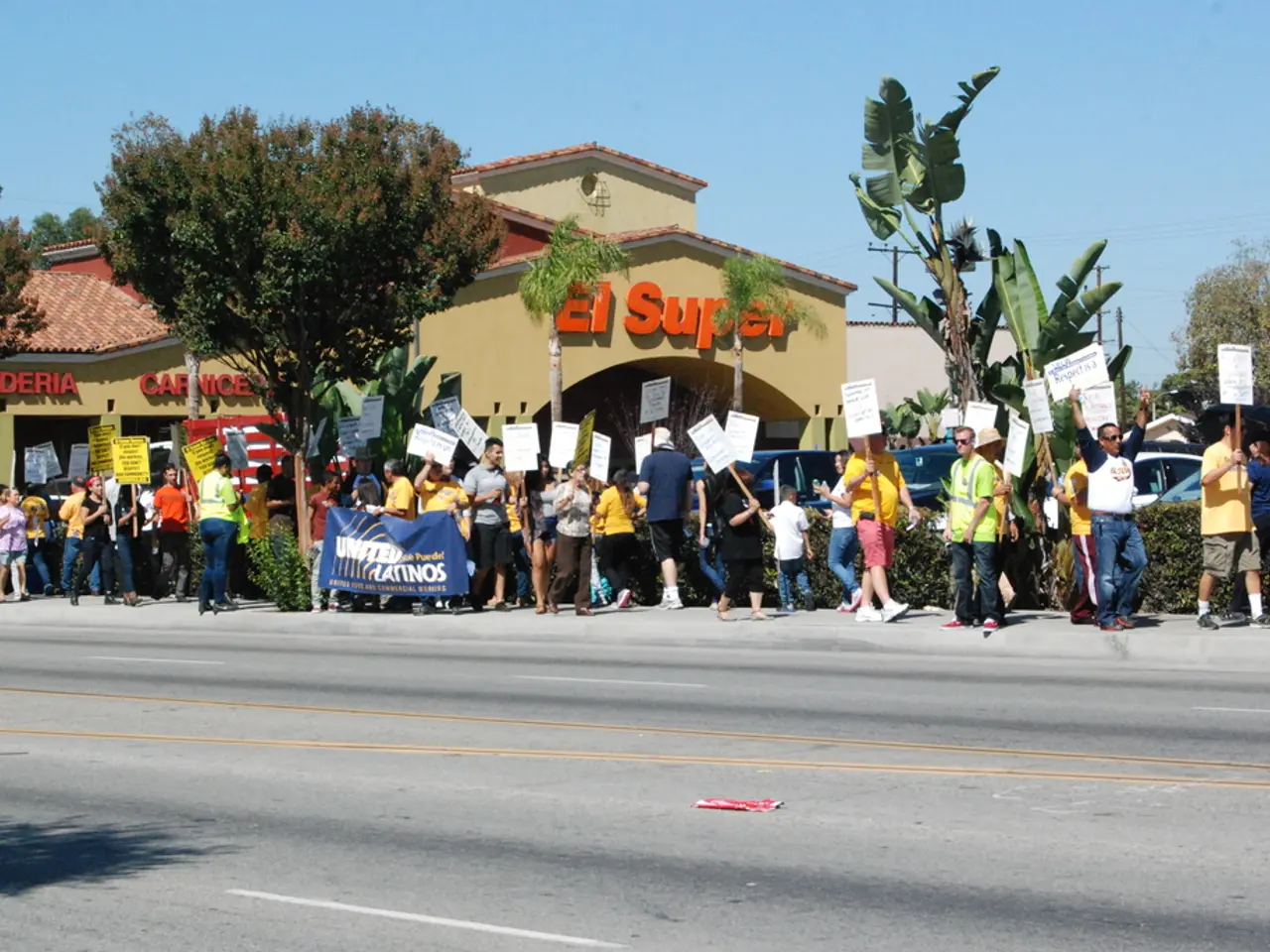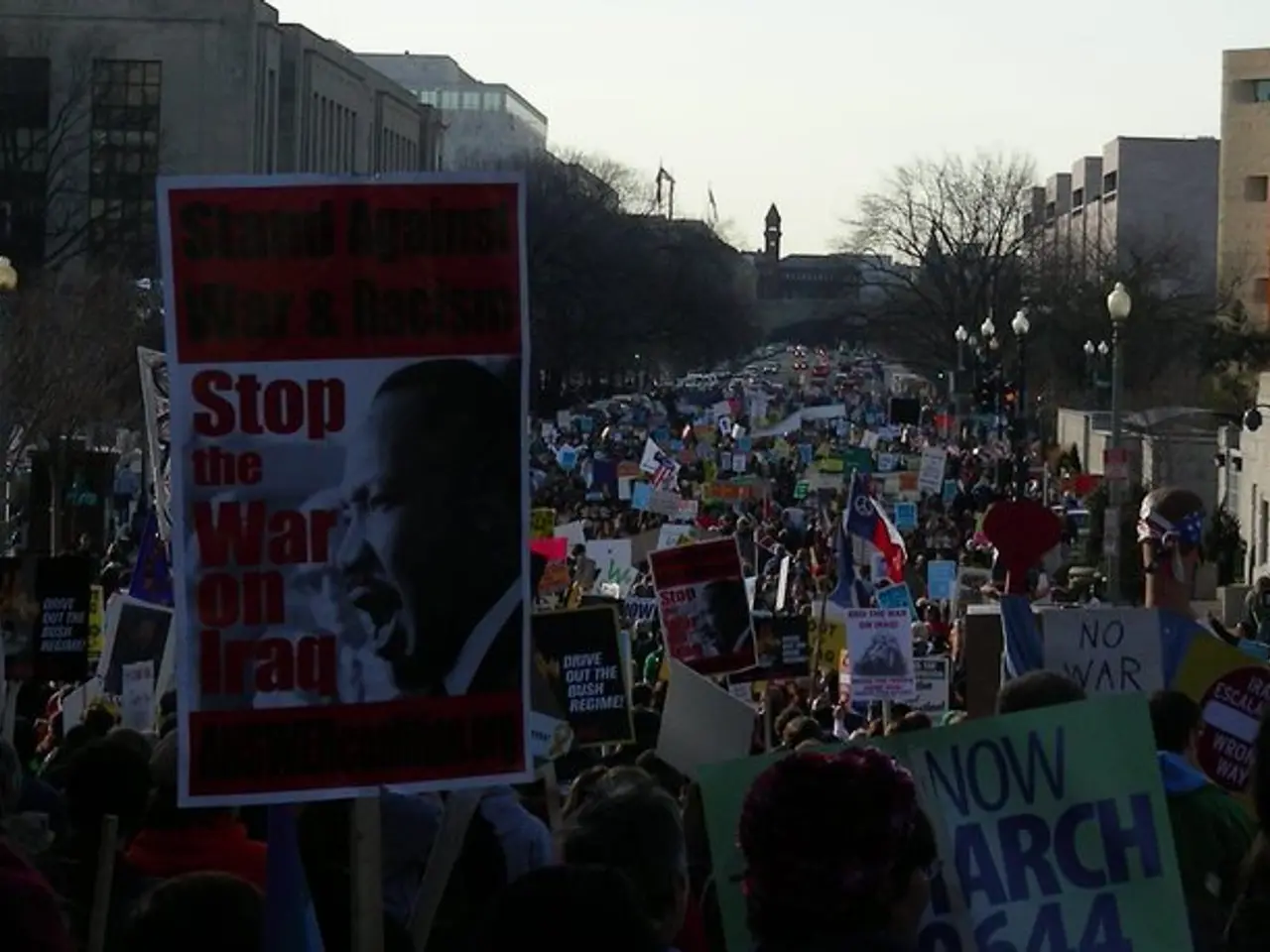Ukraine to Retrieve Approximately 29,000 Evasive Criminals
The ongoing conflict between Ukraine and Russia has resulted in a significant increase in desertions within the Ukrainian army. Since the start of the full-scale invasion, the prosecutor's office has recorded nearly 224,000 cases of desertion and unauthorized absence, with over 107,672 new cases registered between January and June 2025 alone [1][2].
President Volodymyr Zelenskyy has stated that the army recruits approximately 30,000 new soldiers monthly [3]. However, estimates suggest that monthly losses due to death, injury, capture, and desertion in the Ukrainian army are at least as high as the number of new recruits [2].
Desertion and unauthorized absence are a mass phenomenon in the Ukrainian army, with most deserters (around 93%) reportedly not returning to service even after amnesty measures are announced [1][5]. Reasons behind desertion include extended service durations without clear exit options, psychological strain, and the harsh realities of ongoing conflict [4].
Soldiers have been on duty for extended periods (over three years in many cases) without definite end dates or clear discharge procedures, which adversely affects mental health and morale [4]. Prolonged combat conditions and exhaustion contribute significantly to the decision to leave [4]. Legal distinctions also play a role, as Ukrainian law distinguishes between unauthorized absence (temporary absence) and desertion (intent to permanently quit). Desertion is punishable by prison, but due to personnel shortages, many cases are treated as unauthorized absence with lighter penalties, encouraging some soldiers to leave temporarily or permanently [1][5].
Structural difficulties, such as attempts to implement service term limits or reforms to ease demobilization, have so far been unsuccessful, leaving soldiers feeling trapped [4]. Resistance to forced conscription is prevalent on the streets, with bystanders showing solidarity with men being recruited. Last Sunday, villagers in the Mykolayiv region reportedly assaulted military recruiters with clubs and metal pipes [6]. In Vinnytsia, a crowd attempted to free dozens of mobilized men from a football stadium last Friday but were prevented by a large police presence [6].
Despite the implementation of a law that grants immunity to soldiers who deserted and returned to service between November 29, 2024, and August 2025 [7], over 122,000 new cases of desertion were registered in the same period [2]. The actual number of desertions is believed to be much higher, with only a small percentage pursued by law enforcement and brought to court.
In an effort to address this issue, the Ukrainian government is working to improve conditions for soldiers, including addressing the psychological and physical toll of prolonged combat, implementing clear service term limits, and reforming demobilization processes. However, the challenge remains significant, as the conflict continues to take its toll on the morale and well-being of Ukrainian soldiers.
References: [1] Radio Free Europe/Radio Liberty. (2025, August 26). Ukraine: Amnesty Law For Deserters Fails To Stem Military Exodus. Retrieved September 1, 2025, from https://www.rferl.org/a/ukraine-amnesty-law-for-deserters-fails-to-stem-military-exodus/31224429.html [2] BBC News. (2025, June 30). Ukraine army 'losing soldiers faster than it can recruit'. Retrieved September 1, 2025, from https://www.bbc.com/news/world-europe-57430915 [3] Zelenskyy, V. (2025, May 17). Address by President Volodymyr Zelenskyy to the Ukrainian Parliament. Retrieved September 1, 2025, from https://www.president.gov.ua/en/news/64691 [4] Radio Free Europe/Radio Liberty. (2025, April 29). Ukraine: Army Deserters Speak Out On Psychological Toll Of War. Retrieved September 1, 2025, from https://www.rferl.org/a/ukraine-army-deserters-speak-out-on-psychological-toll-of-war/31196575.html [5] Radio Free Europe/Radio Liberty. (2025, August 26). Ukraine: Amnesty Law For Deserters Fails To Stem Military Exodus. Retrieved September 1, 2025, from https://www.rferl.org/a/ukraine-amnesty-law-for-deserters-fails-to-stem-military-exodus/31224429.html [6] Reuters. (2025, August 15). Villagers in Ukraine attack military recruiters with clubs and metal pipes. Retrieved September 1, 2025, from https://www.reuters.com/world/europe/villagers-ukraine-attack-military-recruiters-clubs-metal-pipes-2025-08-15/ [7] The Kyiv Independent. (2025, August 20). Ukraine grants amnesty to soldiers who deserted and returned to military service. Retrieved September 1, 2025, from https://kyivindependent.com/ukraine-amnesty-for-deserters-who-returned-to-military-service/113270/
In light of the ongoing war-and-conflicts between Ukraine and Russia, the politics surrounding the Ukrainian army's desertion have become a general-news focal point. The high number of desertions, estimated at over 224,000 cases since the start of the full-scale invasion, has raised concerns about crime-and-justice implications, as soldiers choose to leave their duty due to a range of reasons.








